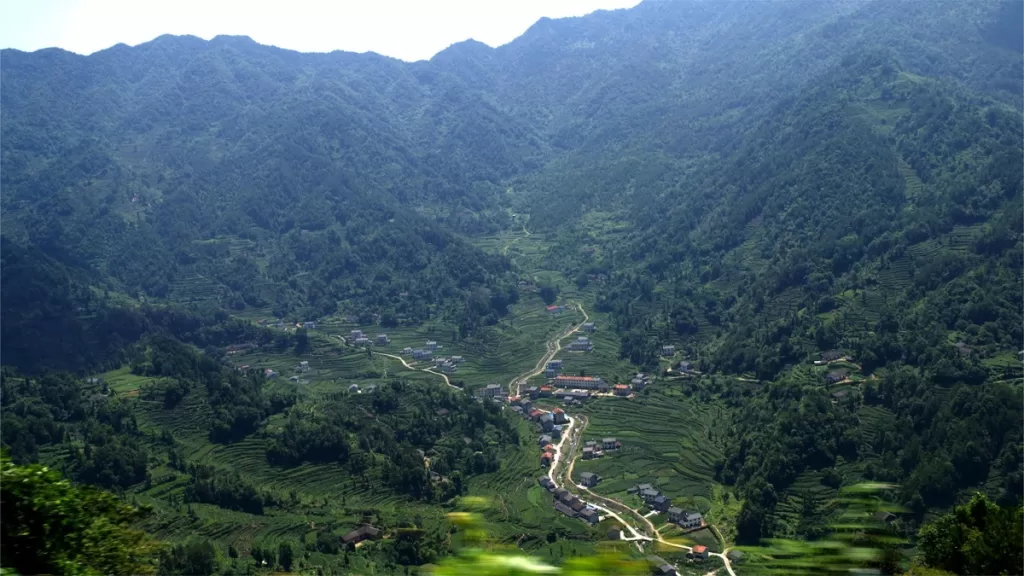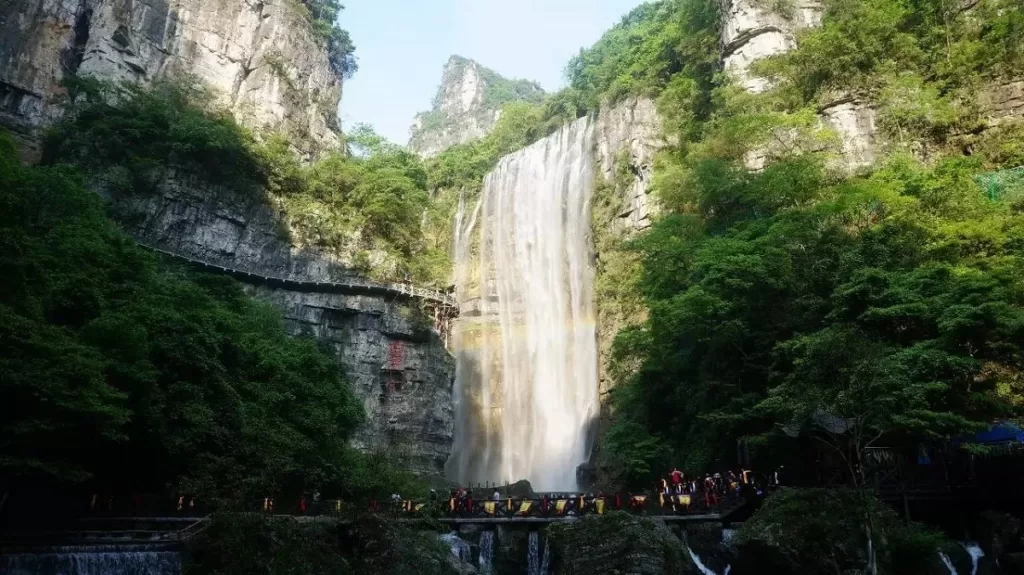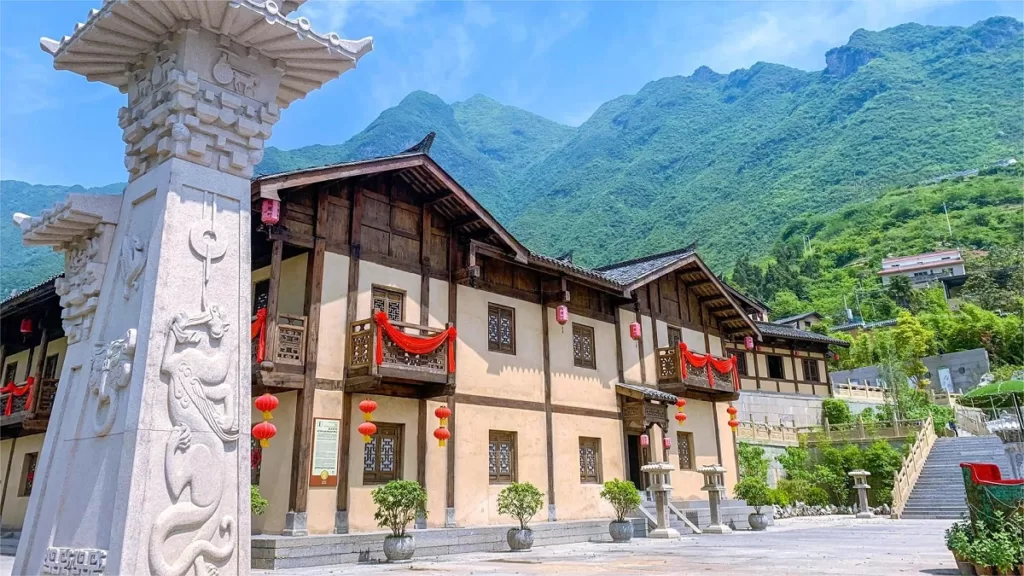Templo Guanling (Túmulo de Guanyu), Dangyang - Bilhete, horário de abertura, localização e destaques


Templo de Guanling (关陵庙), situado a oeste da cidade de Dangyang, na província de HubeiO Templo de Guanling, na China, virado para o rio Ju e com uma vista pitoresca da montanha Jing, é um local histórico venerado com um legado que remonta a mais de 1800 anos. Considerado como um dos três maiores templos Guanyu na China, juntamente com o Templo Guandi em Jiezhou, Shanxi, e o Templo Guanlin em Luoyang, Henan, o Templo Guanling tem uma importância histórica e cultural significativa.
As origens do Templo de Guanling remontam ao local do enterro de Guan YuGuan Yu, um proeminente general militar durante o período dos Três Reinos. Os "Registos dos Três Reinos" contam que no 24º ano da era Jian'an, Guan Yu, após uma derrota em Jingzhou, foi capturado por Sun Quan em Jiashi (atual Hui Mapo no condado de Yuan'an). Guan Yu foi posteriormente executado e a sua cabeça foi enviada a Cao Cao, enquanto o seu corpo foi cerimoniosamente enterrado com os ritos devidos a um vassalo no noroeste de Dangyang.
Índice
- Informações básicas
- Localização e transporte
- Destaques do Templo de Guanling
- Vlog sobre o Templo de Guanling
- Outras atracções em Yichang Suburbs
Informações básicas
| Duração estimada da excursão | 1 - 2 horas |
| Preço do bilhete | 30 RMB |
| Horário de funcionamento | 8.30 - 17.30; Última entrada: 17.00 |
| Número de telefone | 0086-0717-3222166 |
Localização e transporte
O Templo de Guanling está situado a cerca de 3 quilómetros a noroeste do centro da cidade de Dangyang, na cidade de Yichang, província de Hubei, China. Situado na direção oeste, virado para leste, o templo tem vista para o rio Ju e fica ao longe da montanha Jing. O endereço específico do Templo de Guanling é 147 Guanling Road.
Para lá chegar, os turistas podem apanhar o autocarro Dangyang 4 ou Dangyang 5B, e sair na Guanling Scenic Area.
Destaques do Templo de Guanling
História do Templo de Guanling

No período anterior à dinastia Song, o local de sepultamento de Guan Yu era um modesto monte escondido por árvores. No entanto, durante a dinastia Song do Sul, Wang Zhu, o prefeito de Xiangyang, tomou medidas para melhorar e formalizar o local do enterro. Iniciou a construção de um templo memorial, rodeado de muros e adornado com pinheiros e ciprestes. Ao longo das dinastias seguintes, o templo passou por várias renovações e ampliações, culminando com o seu estabelecimento formal como Templo Guanling durante a dinastia Ming.
O túmulo

O conjunto arquitetónico do Templo de Guanling é um espetáculo impressionante. O túmulo, de forma circular, eleva-se a uma altura de 7 metros, rodeado por um muro de pedra e um gradeamento de mais de 70 metros. Todo o complexo do templo está ligado por muros palacianos, construídos com tijolos vermelhos e cobertos com telhas amarelas, apresentando um aspeto grandioso e majestoso. O templo segue a disposição tradicional dos mausoléus imperiais, apresentando um eixo central com oito estruturas antigas dispostas ao longo dele.
Disposição dos edifícios

O eixo central engloba estruturas importantes, como o Pavilhão das Tábuas Memoriais, colunas ornamentais, arcos de pedra, portões de três níveis, pavilhão dos cavalos, salão de culto, salão principal, salão de dormir e o túmulo. A ladear os lados, encontram-se pavilhões octogonais, a Torre primavera-outono e um corredor de estelas, que reforçam a simetria do recinto do templo. O salão principal, adornado com uma placa dourada que proclama "Wei Zhen Huaxia" (Poder que abala tudo sob o céu), alberga grandes esculturas de Guan Yu, do seu filho e de Zhou Cang. Na sala de dormir, uma magnífica estátua de bronze de Guan Yu, com 3,6 metros de altura e 800 quilos, foi doada por compatriotas de Taiwan.
Vlog sobre o Templo de Guanling
Outras atracções em Yichang Suburbs

Área cénica das pastagens de Bailihuang

Parque florestal nacional de Dalaoling

Cascata das Três Gargantas

Aldeia de Zhaojun

Área cénica personalizada de Chexi Folk
Locais históricos de Hubei, Atracções de Yichang